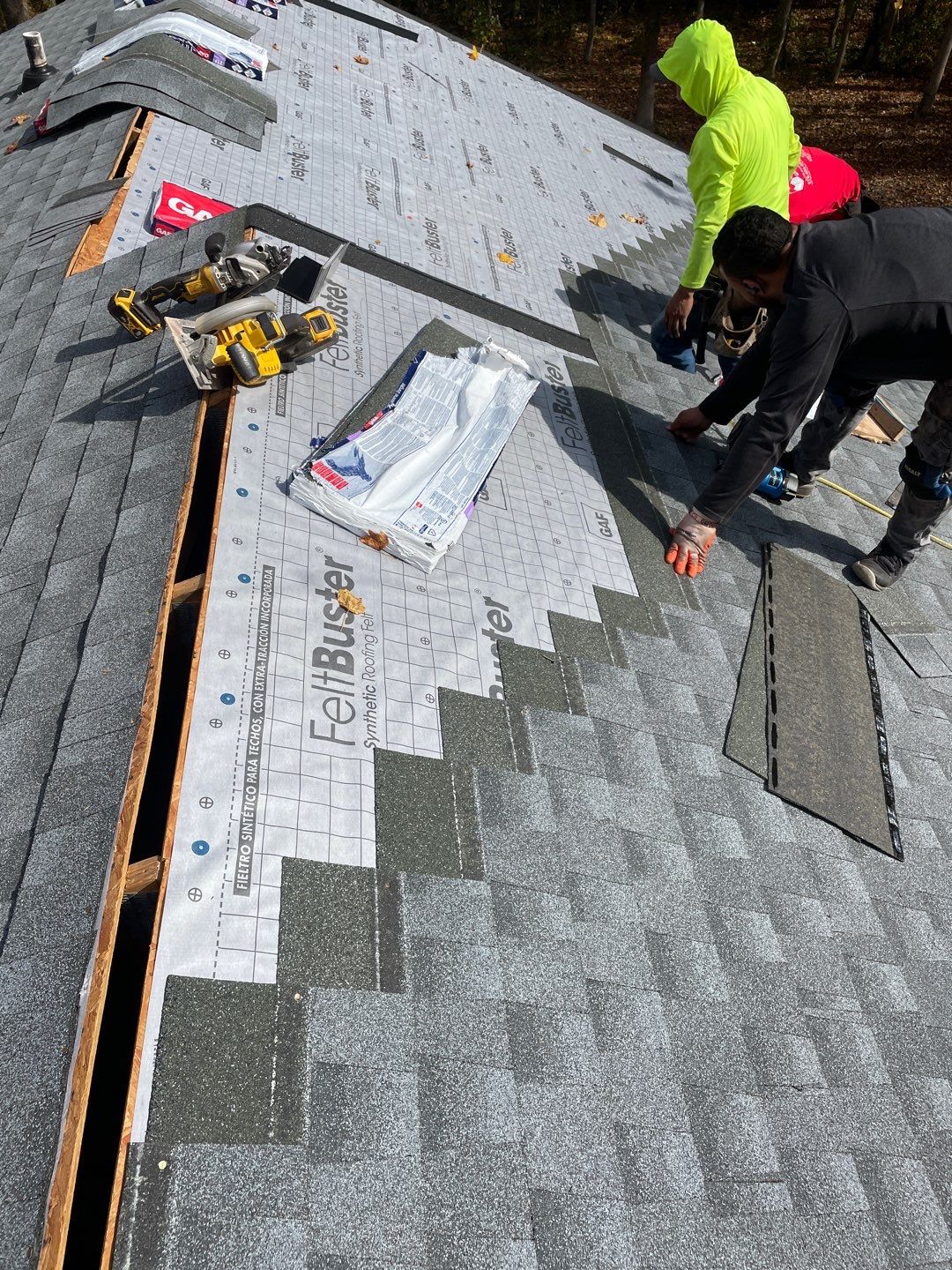Local Insights on Roofing Companies Gainesville Florida Homeowners Prefer
Wiki Article
Ideal Practices for Ensuring Appropriate Roof Covering Air Flow
Making certain proper roofing air flow is essential for the longevity and performance of a roofing system. A well balanced consumption and exhaust vent ratio, commonly 1:300, plays a critical function, with consumption vents ideally put at the lower side of the roofing system for great air entry and exhaust vents at the optimal for warm air leave. Routine evaluations to identify clogs and preserve clear air flow are paramount. Maintaining insulation away from vents is critical to prevent air flow limitation. Comprehending these fundamental aspects sets the phase for more in-depth understandings into installation and maintenance methods that can substantially boost your roof's performance.Understand Ventilation Essentials
Appropriately recognizing air flow essentials is crucial for making sure the longevity and effectiveness of roof. Reliable ventilation reduces wetness build-up and temperature extremes in the attic room, both of which can cause considerable architectural damage in time. A well-ventilated roofing system aids in avoiding common problems such as mold development, timber rot, and ice dams, which can jeopardize the integrity of the roof products and the underlying frameworks.The primary goal of ventilation is to facilitate the motion of air, enabling a regular exchange between the interior and exterior atmospheres. This equilibrium is achieved with a mix of intake and exhaust vents that interact to preserve optimal airflow. Consumption vents, typically located along the soffits or eaves, permit fresh air to enter the attic space, while exhaust vents, frequently positioned at or near the roofing ridge, enable warm, moist air to leave.
Key variables influencing the performance of roof ventilation include appropriate placement, ample sizing, and guaranteeing that both intake and exhaust vents are unblocked. Routine assessment and maintenance are essential to recognize possible obstructions, damages, or inefficiencies in the ventilation system, therefore safeguarding the roofing system's efficiency and durability.
Sorts Of Roof Covering Vents
Roofing vents play an important function in keeping efficient attic ventilation and, by expansion, the general wellness of the roofing system. Different kinds of roofing vents are offered, each with unique benefits customized to certain roofing needs. Ridge vents, for instance, are set up along the roof covering's height, allowing warm, moist air to run away from the attic. They supply continuous air flow and mix perfectly with the roofline, making them both reliable and visually pleasing.
Soffit vents are set up under the eaves and operate in tandem with roof covering vents to ensure a well balanced consumption and exhaust system. By enabling cooler air to enter from below, soffit vents assist in the expulsion of warm air with top vents. Gable vents, situated on the outside wall surfaces of the attic, offer one more effective remedy, especially in homes with saddleback roofs.
Evaluate Your Existing Ventilation

Next, think about the age and problem of your roofing products and air flow components. Older systems may not follow existing building regulations or may have degraded in time, decreasing their efficiency. Conduct a complete evaluation to identify any indicators of damage, such as rust, damages, or gaps that can endanger the system's efficiency.
Furthermore, measure the attic room temperature level and humidity levels. Heats hop over to these guys and humidity can show inadequate ventilation - roofing companies gainesville florida. Make use of a hygrometer and thermostat to obtain exact readings, comparing them with outside conditions. Persistent inconsistencies recommend prospective concerns that require resolving.
Setup Best Practices
Reliable installation of roof air flow systems is extremely important for ensuring ideal performance and durability. Correct installation starts with recognizing the particular air flow demands of the roofing system and the structure it covers. This involves determining the right proportion of consumption to exhaust vents, normally sticking to the 1:300 policy, which specifies one square foot of air flow for every single 300 square feet of attic room flooring area.
The positioning of vents is similarly important. Intake vents should be set up at the roofing's lower edge, typically in the soffits, to enable great air to enter. Exhaust vents, on the various other hand, need to be mounted near or at the roof covering's optimal to promote the exit of cozy, wet air. This produces a natural air flow that aids preserve temperature and dampness balance within the attic space.
Seal all air vent connections diligently to prevent air leakages and possible water seepage. Use top notch products and adhere to producer standards to guarantee durability and effectiveness. In addition, integrating ridge vents with baffles can substantially improve airflow efficiency by avoiding wind-driven rainfall and snow from going into the attic.
Inevitably, exact installment of roofing air flow systems minimizes possible problems such as mold and mildew growth, ice dams, and structural damage, guaranteeing the roof covering's honesty and the structure's overall wellness.
Routine Upkeep Tips
Consistency in maintenance techniques is fundamental to making certain the lasting efficiency of roof covering air flow systems. Throughout these inspections, guarantee that vents are free of debris, nests, and other obstructions that can impede air movement.
Cleaning up the vents is one more vital job. Make use of a soft brush or a vacuum cleaner to get rid of dust and particles from consumption and exhaust vents. Beware not to harm the air vent displays or louvers during the process. Furthermore, check the attic room space for any signs of water damage, which could compromise the honesty of the roofing system.
Correct insulation is equally essential. Make sure that attic insulation does not obstruct the vents, as this can seriously limit airflow. If any kind of insulation has changed or worked out, reposition or change it to keep a reliable obstacle.
Lastly, change any type of harmed or missing components immediately. Broken vents, cracked shingles, or scrubby blinking can all add to insufficient air flow and should be dealt with right away. Routine maintenance makes sure that the roofing ventilation system functions optimally, thus prolonging the lifespan of the roof covering itself.
Verdict
image source Guaranteeing correct roof air flow is paramount for maintaining the efficiency and sturdiness of a roof. Adherence official statement to the 1:300 intake and exhaust vent ratio, combined with the critical positioning of vents, is vital. Routine semiannual assessments, particles cleaning, and guaranteeing insulation does not obstruct airflow are crucial techniques. Implementing these best methods will cultivate a well-ventilated roof system, consequently reducing potential issues connected to moisture buildup and excessive warmth, inevitably prolonging the roof covering's life expectancy.A balanced consumption and exhaust air vent ratio, commonly 1:300, plays a critical function, with consumption vents ideally positioned at the reduced edge of the roof covering for awesome air entry and exhaust vents at the optimal for warm air exit. Intake vents, generally situated along the eaves or soffits, allow fresh air to enter the attic room space, while exhaust vents, commonly positioned at or near the roofing ridge, enable warm, damp air to escape.
Soffit vents are installed under the eaves and work in tandem with roofing system vents to make sure a well balanced intake and exhaust system. By allowing cooler air to enter from below, soffit vents help with the expulsion of hot air with top vents. Adherence to the 1:300 consumption and exhaust vent ratio, combined with the critical placement of vents, is essential.
Report this wiki page